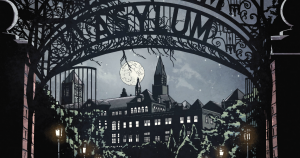
A Semi-Constant Waiting Game
Today we get most forms of entertainment at the push of a button, so we tend to hate having to wait. The situation is even worse if you can’t read print—resulting in an endless waiting game for blind readers.

Today we get most forms of entertainment at the push of a button, so we tend to hate having to wait. The situation is even worse if you can’t read print—resulting in an endless waiting game for blind readers.
A brief list of recommendations our contributors put together.

The two or three months I managed to get by on the reduced dose were enough to convince me: My psychiatrist is lying. I don’t need medication. I’m fine. I can beat this. Until, of course, I couldn’t.

A thorough overview of common autism tropes that mirror and reinforce real-life stereotypes, with links to news stories, research, book reviews or commentary, and blog posts describing relevant real-world experiences.

Welcoming Natasha Razi, our new editor!

When we see institutions in YA, we usually see them in one of two contexts: a “sane” person wrongly incarcerated in one, or a spooky (often old, sometimes abandoned but haunted by ghosts) asylum filled with “crazy people.”
Here’s the thing no one tells you about people with a medical condition: The disease is always on their mind, but they don’t always want to think about it.

Blind characters seem to always go too far in either one direction or the other—either completely ruled by their disability, or completely unfazed. The truth is, I hate both, because neither is honest.
Diversity in children’s literature is often represented as an either/or, without intersectionality; characters can either be autistic or gay, for example, or a wheelchair user or Black, but rarely both. Why is that?
Is any representation better than no representation? That argument frequently comes up in response to criticism, but is it valid?